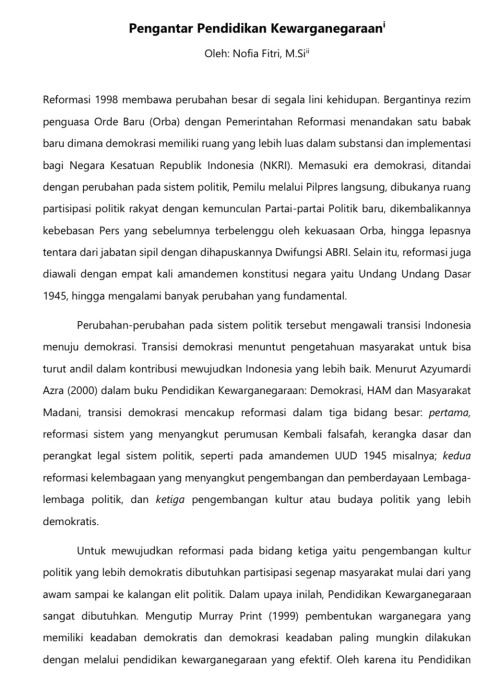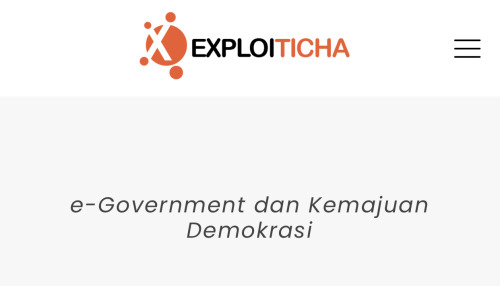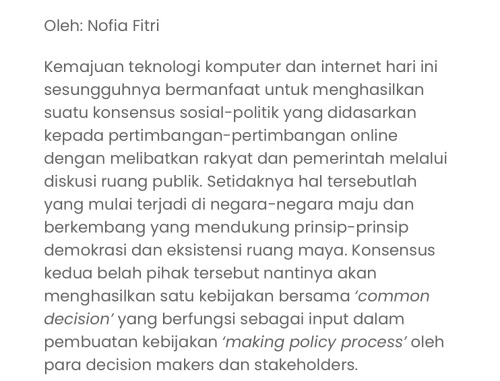Hello Moodbooster!!!

Hello moodbooster!!!
More Posts from Nofiafitri and Others

“University presses don’t just publish books: they keep books in print and rescue out-of-print books from obscurity … But the digital age complicates and threatens the mission of the country’s approximately 100 university presses. Ellen Faran, director of MIT Press, recently told Harvard Magazine: ‘I like doing things that are impossible, and there’s nothing more impossible than university-press publishing.’”
For more of this morning’s roundup, click here.




HOW TO WRITE A STRONG ESSAY
I recently got an ask about how to write an introductory paragraph for an essay so I thought I’d do a post about how to write a good essay.
** Important Points ** For essays in high school, use third person unless the teacher specifically tells you not too. It’s more academic and professional while first person sounds really informal. I’ve heard that in college it’s different but again, it depends on the class. Stay on the safe side and use third person unless otherwise specified. Also, try to be as sophisticated and mature as you can. This makes the essay sound smarter and makes it easier to read.
1) INTRODUCTION
Try to think of an upside down pyramid here. You start off broad and end off tapered to a point (specific). The formula for writing a good intro is this: hook, background info, introduce topic of discussion, and thesis. In the pyramid example, the hook is the broad and the thesis is the narrow. The intro is usually around 8 sentences long.
Hook: Unlike what you’ve probably been told through out high school, the hook is not necessarily a wow statement. It’s typically a broad idea that relates to the topic of discussion. I usually use historical facts or common wisdom and go from there. I then follow it up with a sentence that elaborates on my hook and a sentence that connects my hook with the background info.
Background Info: Here you give the reader some context as to what you will be discussing in your essay. It sets the scene for the topic you’re discussing. Try to be concise.
Introduce the Topic of Discussion: Here you give a brief summary of the points you’re arguing/discussing. It should be one sentence per body paragraph and again, be clear and concise and avoid merely summarizing the plot. This part should cover the gist of your ideas.
Thesis: This should be a longer complex sentence that summarizes your point of view and ideas. This is one of the most important parts of the essay so crafting a good thesis is crucial.
I did a more detailed post about the introduction with an example introduction paragraph HERE.
2) BODY PARAGRAPHS
The meat of your essay. Here is where you state your arguments and defend them with supporting evidence from literature, articles, or even your personal experience. I would generally limit one argument per body paragraph. Which reminds me, most likely you have been taught the canned five paragraph essay. Some people write all their essays in five paragraph format because they thing that is the only way to go. Really, you can do four+ body paragraphs with the common numbers being four and six. It depends on the essay. When writing your body paragraph you need this structure: topic sentence, three points, three examples of supporting evidence, conclusion. Body paragraphs typically fall between 8 -15 sentences.
Topic Sentence: This is similar to a thesis. Here you’re stating the argument that you are proving in a clear and concise sentence.
Three Points: There’s a rule of thumb that you generally want to have three points about each argument and have a piece of supporting evidence for each point. I’m going to start with the three points first. Basically, you want three ideas about your argument that show why it’s valid. For example if you’re trying to argue that cheese is dairy, your three points are it’s made of milk, it’s featured in the dairy section of the grocery store, and the FDA labels it as dairy.
Three Examples of Supporting Evidence: These are usually quotes from other sources or the piece of literature you’re analyzing that support the three points of your argument. To use the really bad cheese example from above, for the milk point you’d use an ingredients label from a package of cheese, for the grocery store point you’d get a sheet with the department labels and the produce in those departments, and for the FDA point you’d find a quote from their website.
Conclusion: This is a sentence or two that wraps up your body paragraph. It should briefly summarize the points you discussed or the topic sentence and help transition into the next paragraph.
2) a. COUNTER ARGUMENT PARAGRAPHS
This paragraph is NOT necessary for most essays. However, some do require them so it’s important to know how to approach them. Depending on whom you ask, they’ll either tell you that the counter argument paragraph goes in the middle of your body paragraphs, or at the end. Personally I prefer the end but the middle is more correct. Placing it in the middle allows you to end on a strong note but I think it’s a matter of personal preference. The counter argument is used to present an opposing view point and say why it’s wrong. This can strengthen your argument if it’s done properly but ruin it if it’s done wrong so tread carefully. The only thing different from the body paragraph structure is the topic sentence.
Topic Sentence: Here you need a specific template to start the paragraph properly. I usually use: It may be argued that _______________ but there is sufficient evidence to show that _______________. The first blank is filled with the opposing argument and the last blank is your argument. There are different ways to structure this sentence but this is the one I use.
The rest of the paragraph is the same as the body paragraph: you get three points as to why the counter argument is wrong and three points to support it. Then you end with a typical concluding sentence.
3) CONCLUSION
This is where you wrap up your arguments and finish strong. It has three components: a restatement of your thesis, summary of your arguments, and general statement to wrap it up. Think of the right side up pyramid this time. The pointy end is the thesis and the bottom is the general statement that closes your essay. A conclusion is typically 5 sentences long.
Restatement of Thesis: This is pretty self explanatory; you restate the thesis using different language than you used in your intro.
Summary of Arguments: Here you briefly touch upon the arguments you covered in your essay. Again, clear and concise, and whatever you do, DO NOT introduce new information. It can ruin the amazing essay you worked so hard on.
General Statement: A general statement is a broad idea that you use to tie your entire essay together. It’s kind of like the hook but should be more relevant to your essay.
And that is how you write a killer essay. I use this technique whenever I write and it has never failed me. Hopefully if will help you improve your writing! If you have any questions, feel free to hit up my ask box.

First post in 2020
"Kau mungkin bisa menutup mulutku, menghentikan aksiku, bahkan memenjarakan aku, tapi kau tidak akan pernah bisa menghentikan kekuatan IDE, karena 'FIKIRAN' ku dapat merubah DUNIA meski dibawah ancaman mu!"
(Bunga Mataharry)
Love it!!!!
back-to-school reminders
spend a lot of time figuring out and setting up an organization system that works for you. it seems boring, but it’s going to help you so much!
explore new things, but don’t overextend yourself and end up exhausted.
eight hours of sleep sounds like a lofty goal during the year, but make it your priority to get as close to that as you can. your body’s going to thank you!
stay on top of your assignments. spending your night doing homework might not be ideal, but do you really want to spend your weekend catching up on the reading you were supposed to be doing all week?
write down everything you have to do. never rely on memory alone; students lead ridiculously busy lives and there’s a reason you have that planner.
talk to your teachers the moment you start struggling. raise your hand; go in for office hours. they don’t bite. most of the time. if you have a teacher whose teaching you just can’t understand no matter what (this is totally normal, don’t worry), then talk to your friends or maybe another teacher in the department to get help. there’s also a wealth of resources online.
sometimes you need to pick hanging out with your friends over doing homework. don’t feel guilty - you deserve time with them.
please don’t pull all-nighters. but if you don’t have another choice, take quick power naps in the middle of the night to keep yourself healthy and alert.
you won’t be perfect all the time - you’re human! it’s okay! learn to love yourself no matter what.
Pagiii....
Kawan-kawan butuh informasi seputar IT dan Politik, blog Bunga Mataharry didedikasikan untuk kalian yang tertarik di isu-isu Cyber Politics. Semoga bermanfaat yaaa ;)
Silahkan kontak aku di email, blog or social media.. I'll be very happy to help you.
Do yourself a favor. Learn to code. Here's how.
I’ve said this to my non-techie friends countless times. It’s no secret that being able to code makes you a better job applicant, and a better entrepreneur. Hell, one techie taught a homeless man to code and now that man is making his first mobile application.
Learning to code elevates your professional life, and makes you more knowledgeable about the massive changes taking place in the technology sector that are poised to have an immense influence on human life.
(note: yes I realize that 3/5 of those links were Google projects)
But most folks are intimidated by coding. And it does seem intimidating at first. But peel away the obscurity and the difficulty, and you start to learn that coding, at least at its basic level, is a very manageable, learnable skill.
There are a lot of resources out there to teach you. I’ve found a couple to be particularly successful. Here’s my list of resources for learning to code, sorted by difficulty:
Novice
Never written a line of code before? No worries. Just visit one of these fine resources and follow their high-level tutorials. You won’t get into the nitty-gritty, but don’t worry about it for now:
Dash - by General Assembly
CodeAcademy
w3 Tutorials (start at HTML on the left sidebar and work your way down)
Intermediate
Now that you’ve gone through a handful of basic tutorials, it’s time to learn the fundamentals of actual, real-life coding problems. I’ve found these resources to be solid:
Khan Academy
CodeAcademy - Ruby, Python, PHP
Difficult
If you’re here, you’re capable of building things. You know the primitives. You know the logic control statements. You’re ready to start making real stuff take shape. Here are some different types of resources to turn you from someone who knows how to code, into a full-fledged programmer.
Programming problems
Sometimes, the challenges in programming aren’t how to make a language do a task, but just how to do the task in general. Like how to find an item in a very large, sorted list, without checking each element. Here are some resources for those types of problems
Talentbuddy
TopCoder
Web Applications
If you learned Python, Django is an amazing platform for creating quick-and-easy web applications. I’d highly suggest the tutorial - it’s one of the best I’ve ever used, and you have a web app up and running in less than an hour.
Django Tutorial
I’ve never used Rails, but it’s a very popular and powerful framework for creating web applications using Ruby. I’d suggest going through their guide to start getting down-and-dirty with Rails development.
Rails Guide
If you know PHP, there’s an ocean of good stuff out there for you to learn how to make a full-fledged web application. Frameworks do a lot of work for you, and provide quick and easy guides to get up and running. I’d suggest the following:
Cake PHP Book
Symfony 2 - Get Started
Yii PHP - The Comprehensive Guide
Conclusion
If there’s one point I wanted to get across, it’s that it is easier than ever to learn to code. There are resources on every corner of the internet for potential programmers, and the benefits of learning even just the basics are monumental.
If you know of any additional, great resources that aren’t listed here, please feel free to tweet them to me @boomeyer.
Best of luck!

When my study room moves to my dinning room 😍 .. Xoxoxo hellcome my examination, what a perfect pregnancy life with several paper submissions.. #studentlife #UniversityofIndonesia #pregnantstudent#mommyslife #bigbelly
Hi everyone.. I'm a Researcher who interesting on the political issues. I'm doing master on International Relations and Political Science at University of Indonesia. Please don't hesitate to contact me through this. I'm also the owner of Warung Data IT...
74 posts